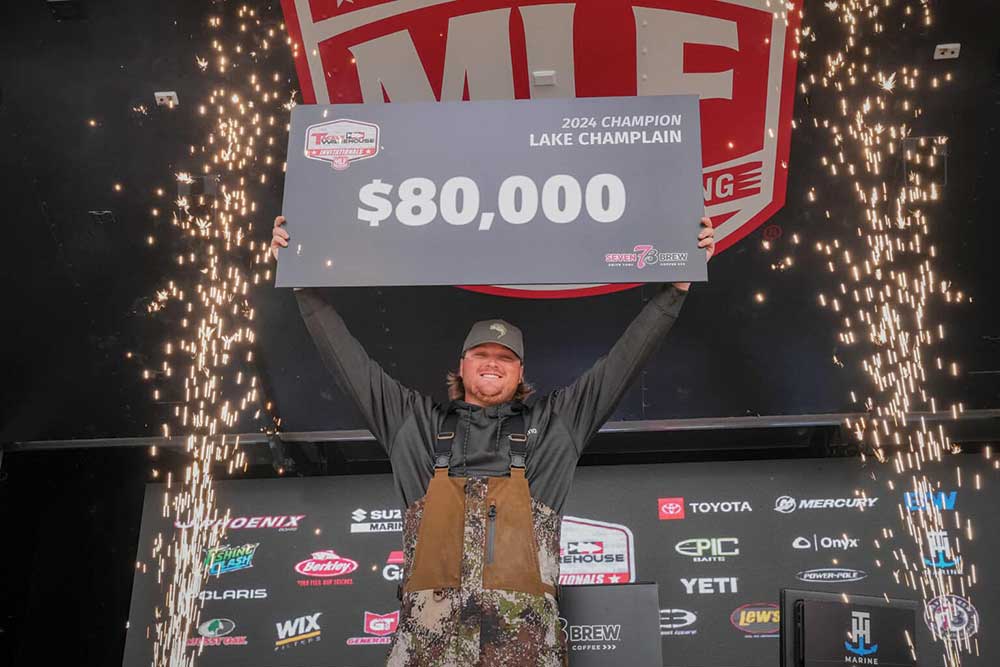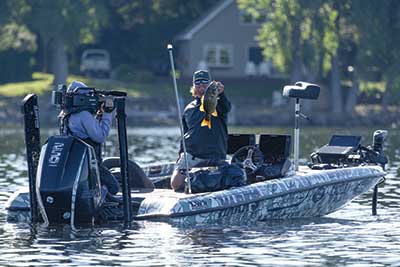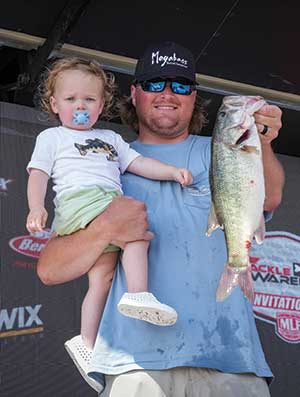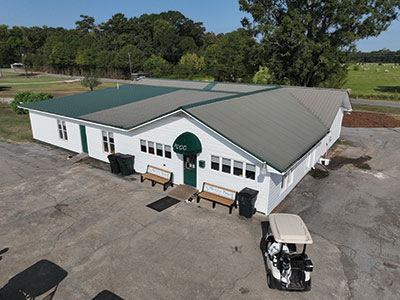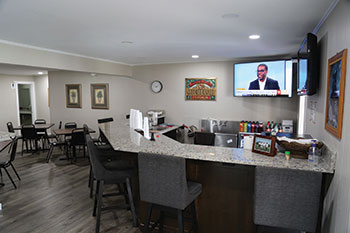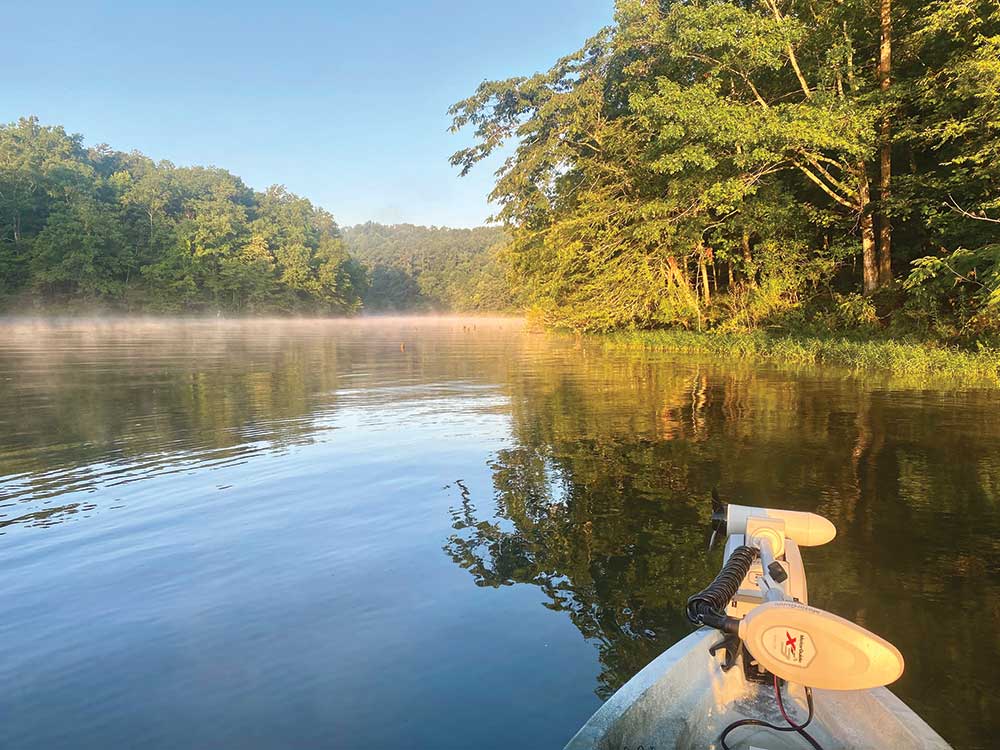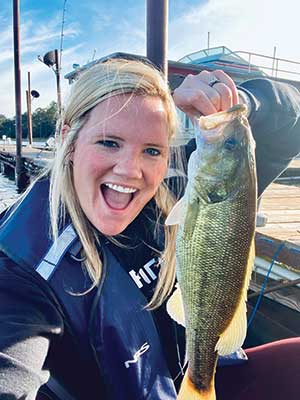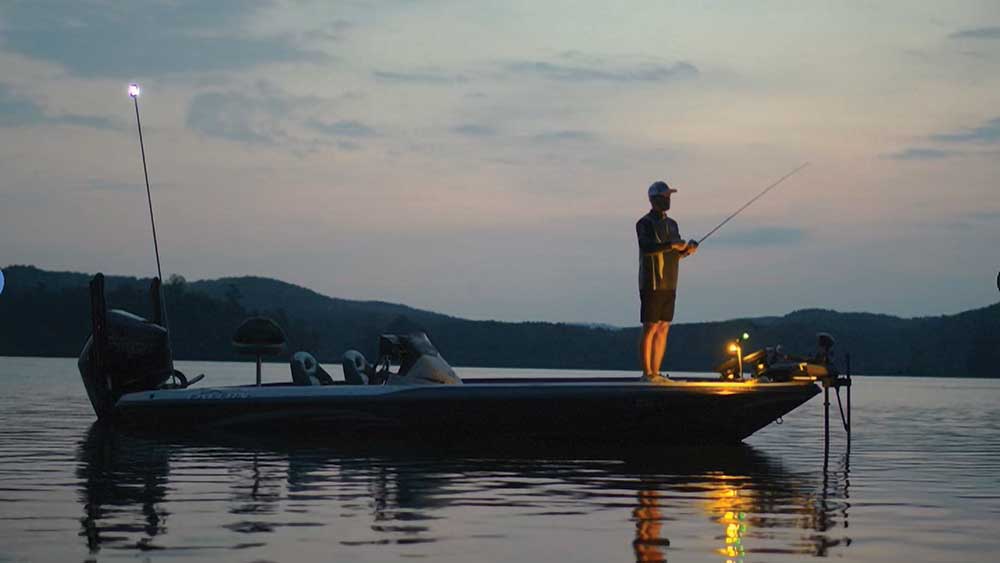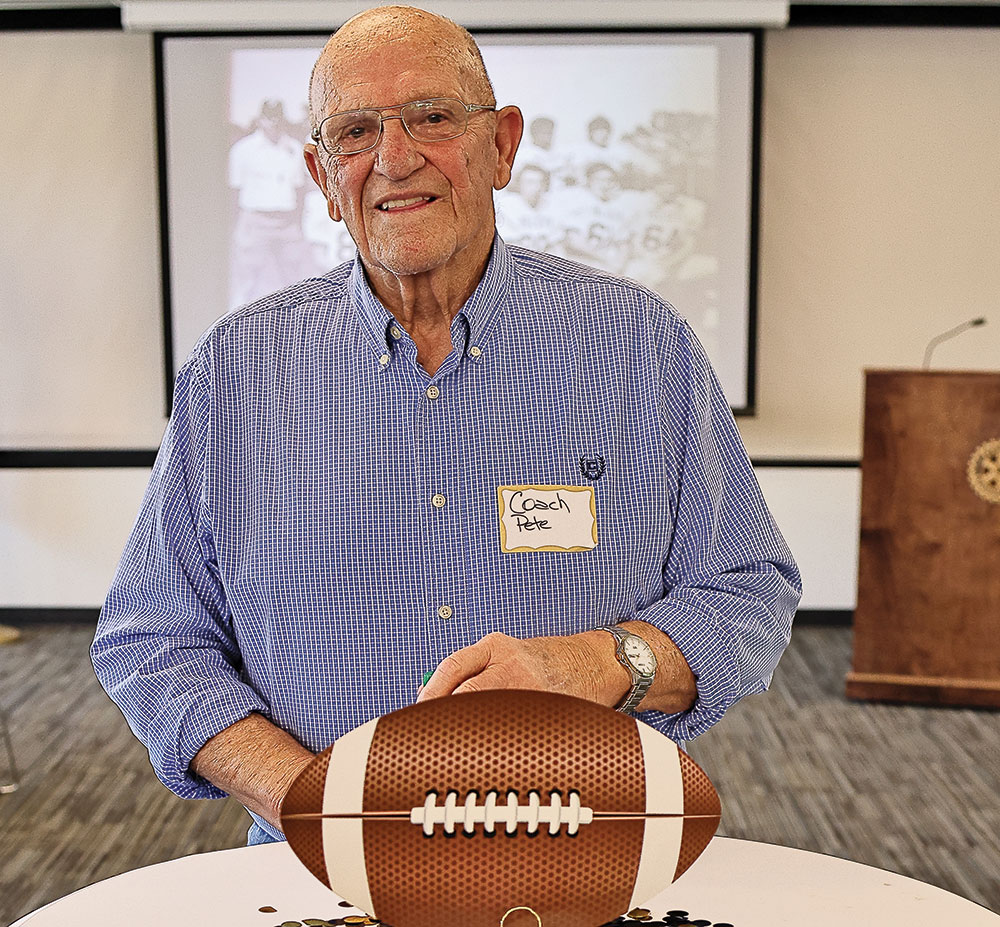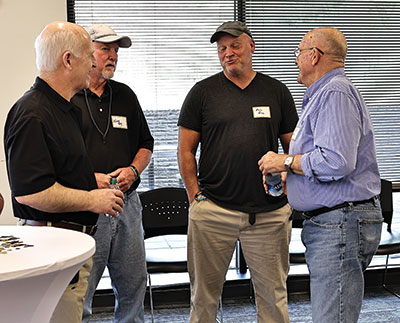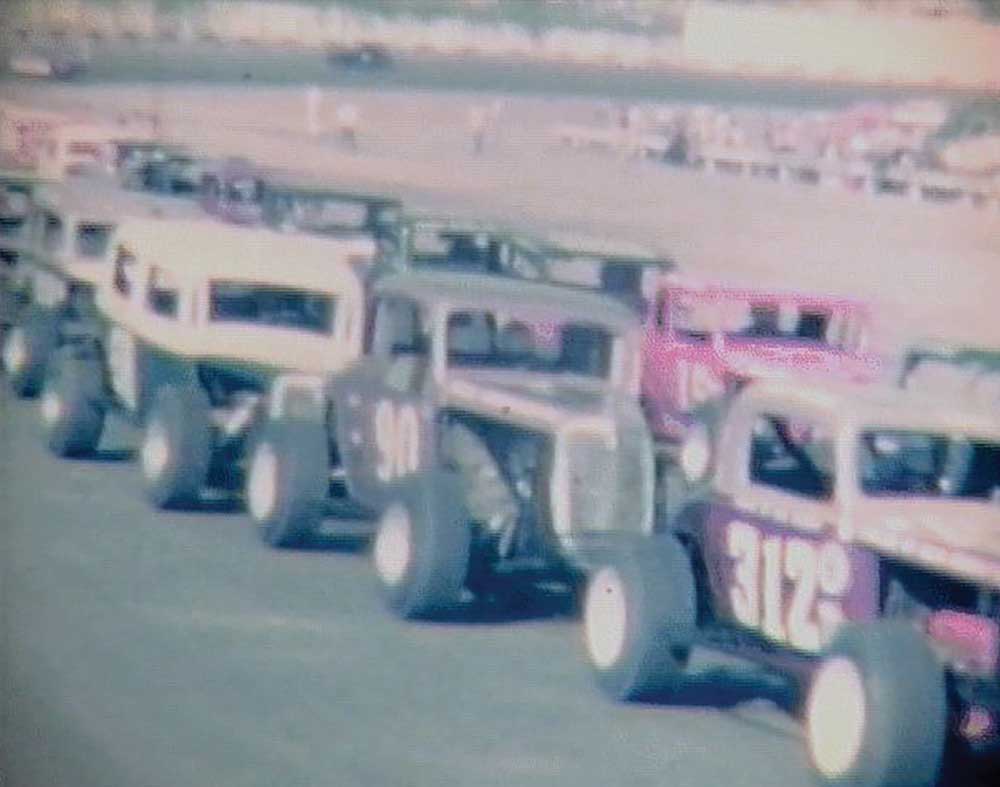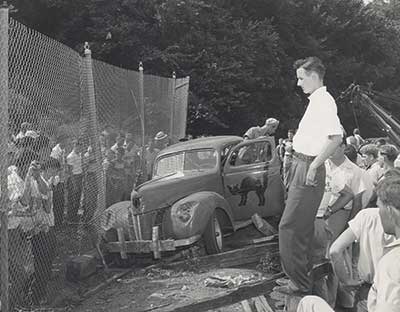A lifelong love of fishing has Springville’s Walker climbing in pro fishing circles
Story by Paul South
Submitted photos
Like most anglers, from weekenders to tournament champions, Jacob Walker’s love affair with fishing brings with it a creel full of family and friends who taught him the art and science of the sport.
Like a teenage boy smitten by the homecoming queen, Walker fell fast and hard for angling. Even as a small boy, from the Warrior River to Logan Martin Lake, fishing and family were his Alpha and Omega.
He and his friends even engaged in a little truancy to take to the outdoors. “We didn’t skip school to do bad things,” he said. “We skipped school to go fishing and hunting.”
After high school, he enrolled briefly at UAB. But boats and tackle, not books and tests, won out. While working at Mark’s Outdoors, a Vestavia store, Walker’s fire for fishing – sparked as a small boy by his grandfathers, father, Geoff Walker, stepfather, Dexter Laird, and friends – only grew.
One grandfather owned a place on Logan Martin Lake. “When I was little, my grandfather took me to Logan Martin all the time,” Walker said. “It seemed like we got up at 1 in the morning when we’d get up early and get out on the water.
“They would never see me from the time we got there until it was time to leave,” he recalled. “I was walking around, fishing. I’ve been doing it my whole life, man. It’s crazy.”
From those earliest days, Walker began to craft his own style of fishing. Now on the Major League Fishing Circuit, that style has served him well.
In 2024, he captured his first MLF tournament title in a weather-abbreviated event at Lake Champlain, N.Y. On the circuit, he carries counsel from his early teachers in his mind and heart: Find your own style – from water depth, to location, to lures – and strive to be the best.
“You can’t beat everybody at their technique. You can’t always be the best at every technique. So, when I was growing up fishing on the Warrior River, I spent a lot of time fishing in shallow water… around a lot of grass and logs and lily pads and stuff. What’s really got me (to the pros) is shallow fishing.”
What advice would he offer to someone dreaming of a pro career?
“Try to do it all. Try to learn everything. But do what fits you. Don’t try to copy someone else’s style. Try to find a style that’s going to work for you. Sometimes, that’s not going to work out. But when it does, it’ll pay off.”
That philosophy has worked in Walker’s brief tournament career. According to the MLF website, in 12 tournament appearances he has five top 10 finishes, including the Lake Champlain title, earning more than $150,000.
Tournament fishing, like the rest of society, is increasingly technology driven. But even at 26, Walker considers himself “old school.” Sure, he uses tech gadgetry, but his fishing is driven by attributes as old as fishing itself.
“There are a lot of younger guys coming out of high school and college, I would say 24 and under. Those guys are very, very good at technology … But the guys like me who are between 25 and 35, we grew up fishing the old-school techniques, not a lot of technology. The really good technology we have now, we go to watch it advance.”
He added, “A lot of guys like me, we grew up learning from the old school fishermen. No technology. They would just go off their eyes, their hearts, their instincts. (Younger tourney anglers) don’t really know the old-school techniques – fishing off your instincts and reading the water.”
So he holds fast to the old ways, even In these modern times. Shallow water. Fishing around cover and around docks. For Walker, style matters, but so do the old ways.
“Luckily, I’ve got the old-school instincts. But fortunately, I’ve been on board with the technology. So I can do both.”
He calls that period for fishermen between the mid-20’s and mid-30’s “the magic number.” And Alabama is loaded with talented anglers, buoyed in part by the state’s diverse waters with different depths and stains and currents.
“The Coosa River, all these rivers, there’s all kinds of styles of fishing you can learn. So I was very fortunate to grow up fishing here. It’s taught me everything.”
And that knowledge along with the support of his wife, Alyssa, and other family, friends and corporate sponsors have driven his dream. He knows his career will involve fishing. What form that professional life will take is the great unknown.
He’s a brand ambassador for NSR Fishing, Coosa Cotton apparel, Phoenix Boats from Stateline Marine in Lanett, Mark’s Outdoors, Megabass, Deps lures and Dirty Jigs Tackle and other firms and individuals. Walker has a long list of supporters.
“Part of the reason I decided not to go to college was I knew I wanted to pursue fishing as a career. Whether it’s fishing in tournaments, or being in the industry, I still don’t really know 25 years from now what I’ll be doing. But I know I want it to be (fishing) industry related. Working at Mark’s Outdoors gave me that golden ticket.”
His tournament career began in the pandemic year2020 in the Bassmaster open series. He finished second in his first event at Lay Lake, winning more than $18,000. In the next year, he narrowly missed qualifying for the Bassmaster Elite Series.
“I was confident after that. I know I could do this.”
After moving to MLF in 2023, Walker, now the proud father of a new baby, fished closer to home, but managed to finish sixth overall.
He credits Alyssa for her support and keeping the waters steady at home. Thanks to his job and the support of corporate and personal sponsors, he’s been able to compete in tournaments that carry with them $5,000 entry fees.
“It’s been a great year,” he said. “I finished seventh overall. I fished in six tournaments. I got a check in five, including Lake Champlain.
“It’s crazy that a guy from way down in Alabama could go all the way up there close to the Canadian border and win,” he said. “That was such a cool experience.”
High winds that made waves treacherous on a lake that features an “inland sea” cut the tournament short. In the joy of winning, something gnawed at Jacob Walker’s heart. It didn’t feel like a full-fledged win. That led to an unusual victory celebration. There was no cracking open a bottle of champagne, no lighting a victory cigar. He had to settle his mind and know that had the tournament not been cut short, he still would have won.
But it seems his celebration would have been a hit with family and friends who stoked his passion for fishing when Walker wasn’t much bigger than his rod and reel.
“I went fishing,” he said. “After that, I got to prove to myself I would have won anyway. It was a ball.”
And if there is a takeaway from Jacob Walker’s story, it’s thankfulness, family and friends.
“I’m very thankful to the people who took me fishing when I was a kid. I’m very thankful to my sponsors and to my wife, too. Without them, I wouldn’t be here.”











